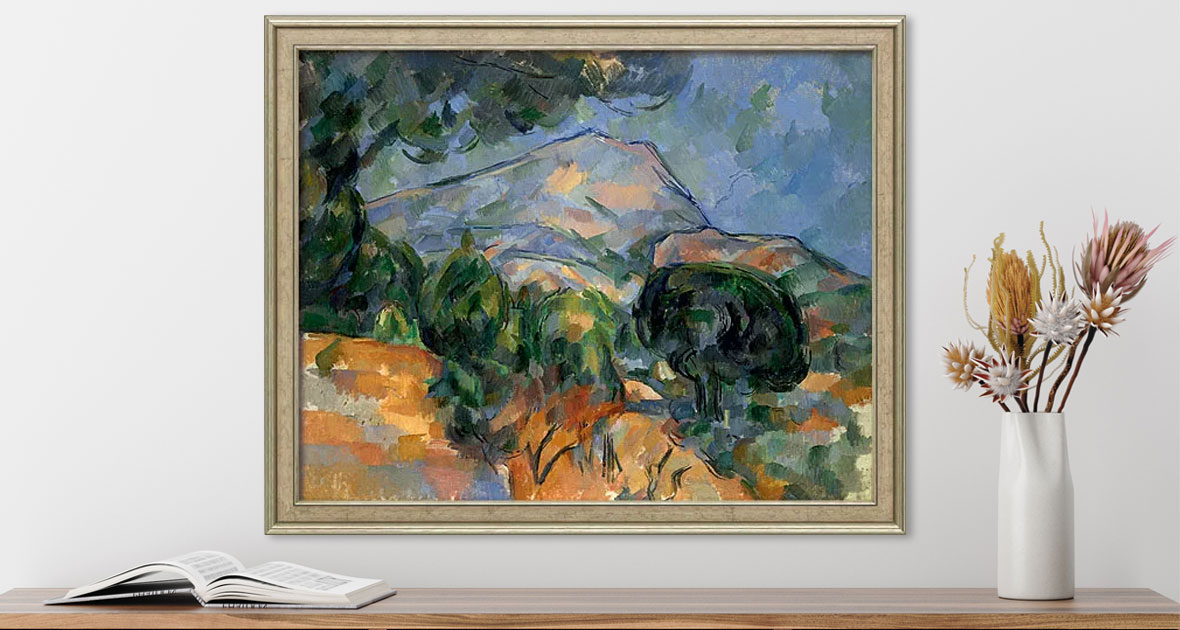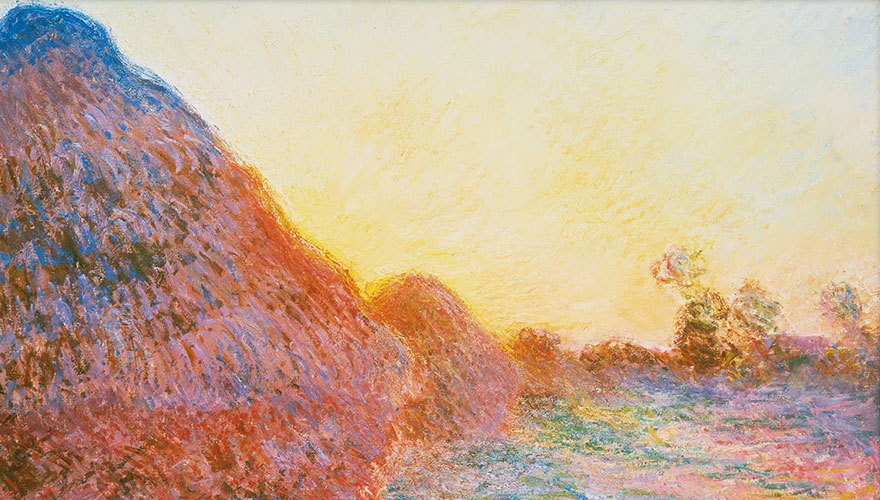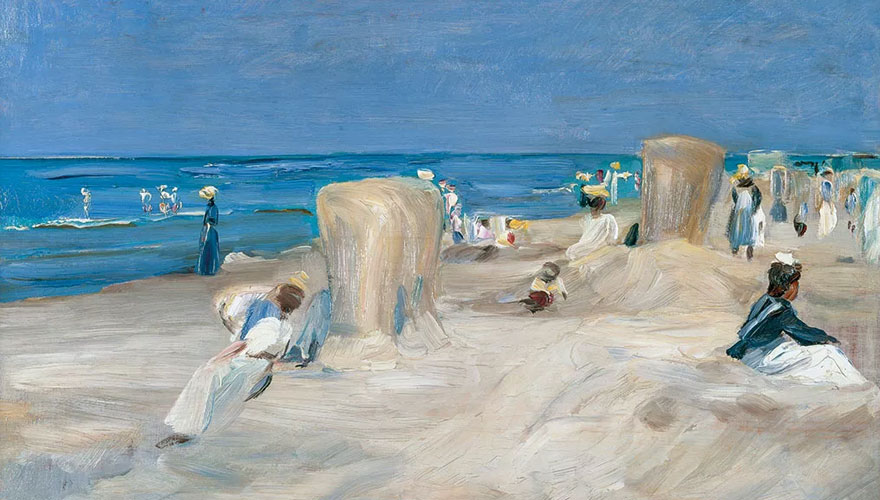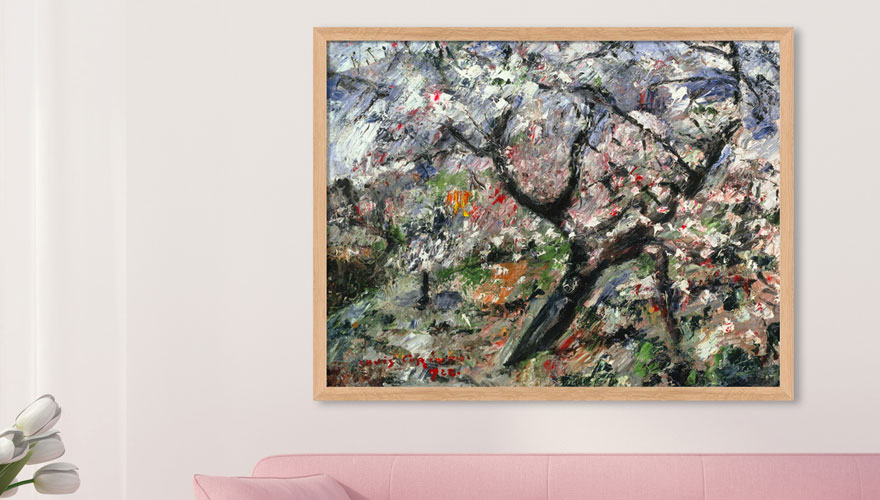
Impressionism - the World Seen Through the Eyes of Painters
The epoch of Impressionism in the second half of the 19th century marks a major turning point in the history of painting. Some of the most famous artists and works in the history of art date from this period. At the same time, the course was set for modernist painting. The painters of Impressionism abandoned a naturalistic mode of representation and reflected in their paintings their individual perceptions, especially of light and atmosphere.
Many styles of the 20th century took up the impulses of the Impressionist pioneers. Today, some of the most expensive paintings of all time can be attributed to this epoch, for example, "Montagne Sainte-Victoire" by Paul Cézanne, "Verger avec cyprès" by Vincent van Gogh as well as "Le Bassin aux Nymphéas" and "Les meules" by Claude Monet.
The Impressionists Developed a New Philosophy of Painting
The Impressionist painters challenged the established standards of painting to an unprecedented extent. In the mid-19th century, painting was still dominated by classicism and romanticism and had clear rules and structures. Thus, it was considered the highest art to work out pictorial subjects as naturalistically and perfectly as possible. Whether the painted scenes corresponded to reality, however, was of secondary importance, so the paintings often showed exaggerated, overburdened with content or even fictitious motifs.
A small group of Parisian painters, among them, Claude Monet, Camille Pissarro, Alfred Sisley, and Edgar Degas, did not identify with this painting style and proclaimed a return to reality - however, not in the sense of a representation as close to reality as possible, but rather in the sense of a painting that authentically reflected the artists' perceptions and feelings. From then on, the Impressionists focused on capturing the fleeting impression and atmosphere of a single moment and not - as had been the case centuries before - on images of people and objects or representative scenes. Above all, they attached particular importance to the depiction of light conditions. They built upon the works of painters such as William Turner, John Constable, or Gustave Courbet, who in previous epochs had already been able to depict the light and the atmosphere of the moment in their landscape paintings.
Pictorial Objects as Projection Surfaces for Light
The Impressionists developed a special sense for how the colours and, thus, the entire atmosphere of a scene could change with the times of day, seasons, or weather conditions. With this awareness, they virtually elevated it to an art form to painting a single motif from the same perspective, but each time under changing environmental conditions. For example, Camille Pissarro created several versions of views of the Boulevard Montmartre in Paris, and Claude Monet repeated his view of Rouen Cathedral in a series of 30 paintings.
This approach underlines how little relevance the painters seemed to attach to the pictorial objects per se and that they basically regarded them only as projection surfaces for light. The pictorial objects as such, Claude Monet is cited as saying, had no meaning for him anyway: "What I want to reproduce is what lies between the motif and me."

Characteristics of Impressionism: Painting in a New Light
The Impressionists realised that they could not achieve their artistic goals with the stylistic means of painting known up to that time. So, they changed both the techniques and modes of expression as well as the entire act of painting to suit their purposes.
In the beginning, the Impressionists realised that the atmosphere of a moment and the subjective impression could not be depicted with the naturalistic mode of representation known from Classicism, Baroque and Romanticism, for example. So, they moved away from the traditional style of meticulously detailing individual subjects and concentrated on the overall impression of the picture and the colour composition. They softened the contours of the pictorial objects and thus imitated the effect that on sunny days flooded with light, hardly more than the outlines of the objects are barely recognisable.
Moreover, they ignored other traditional principles of pictorial composition, such as the central perspective. In addition, the Impressionist painters predominantly used bright and luminous colours and worked with short but clearly visible brushstrokes in single colours. The public also had to get used to the Impressionists' technique. This applied above all to viewing, for if one views Impressionist paintings up close, often only dabs of colour can be discerned. Only from a distance do the pictorial objects emerge from the sea of strokes and dots, and the intended pictorial impression unfolds.
Not Only Through the Application of Colour the Impressionists Break New Ground
They also left their studios and set up their easels directly in front of their subjects. Painting in the open air gave them the best opportunity to observe the scenery, absorb the atmosphere and transfer their impressions directly onto the canvas. Impressionism thus revolutionised painting in several respects and created the basis for many styles of the following decades, such as Expressionism, Cubism or Surrealism.

The Motifs in Impressionism
In the mid-19th century, the choice of motifs was subject to strict rules. Usually, one or a few prominent pictorial objects had to take centre stage in a painting. However, the Impressionists also abandoned this tradition. They did not paint the subjects for their own sake but used them merely as a reflection surface for the light, basically as a means to an end. Therefore, one looks in vain for famous personalities in Impressionist pictures, as well as epic battles or mythological scenes.
Instead, the Impressionists chose unspectacular and everyday motifs and scenes in which they could depict the lighting conditions in a particularly impressive way. The particularly frequent motifs, therefore, included above all landscapes ("Poppy Field" and "The Water Lily Pond" by Claude Monet; "Woman with Parasol in a Garden" by Auguste Renoir), scenes on the beach and by the sea ("On the Beach at Noordwijk" by Max Liebermann; "The Sea at L'Estaque" by Paul Cézanne) and views of cities and architecture ("Boulevard Montmartre on a Winter Morning" by Camille Pissarro; "Café Terrace at Night" by Vincent van Gogh).
But portraits ("Woman with Parasol" by Claude Monet), genre scenes with small or larger parties ("Munich Beer Garden" by Max Liebermann; "The Card Players" by Paul Cézanne) and still lifes ("Twelve Sunflowers in a Vase" by Vincent van Gogh; "Two Pears" by Edouard Manet) were also among the motifs. However, socially critical, or political themes rarely played a role - Impressionism mainly showed a light-hearted, almost idyllic view of the world.

The Success of Impressionism Didn't Set In Until Late in Its History
Today, Impressionism is regarded as one of the most important epochs in the history of art but its artists initially faced considerable resistance. With their progressive painting style, they initially found no support among the established art institutions such as academies and museums, and the press was not very friendly either. In 1876, for example, the "Figaro" is said to have written after an exhibition that the "alleged paintings" were a "disaster" caused by a few "madmen".
Paul Durand-Ruel - Key Figure of Impressionism
But there were also art lovers, who were open to the Impressionists - among them the gallery owner Paul Durand-Ruel, who was to become a key figure in Impressionism. He recognised the potential of the Impressionists early on and championed the new generation of artists. He bought their works, organised exhibitions in his gallery, and also supported some painters financially, including Édouard Manet and Claude Monet.
With his commitment to the largely despised artists, Durand-Ruel risked a lot. He risked not only his reputation as a serious art expert but even his house and home: because of his high expenses for the artists, he barely escaped bankruptcy on several occasions. But it was not least thanks to his open-mindedness and courage that Impressionism was able to develop further and was noticed by the public.
The Breakthrough of Impressionism in Germany and Europe
Towards the end of the 19th century, Impressionism had finally established itself to such an extent that many of its artists, such as Claude Monet or Camille Pissarro, were able to earn a good living from their work. In the following years, the new painting style of the French increasingly found followers all over Europe, including Germany. Among the representatives of German Impressionism at the beginning of the 20th century were, for example, Max Slevogt, Lovis Corinth and Max Liebermann.
